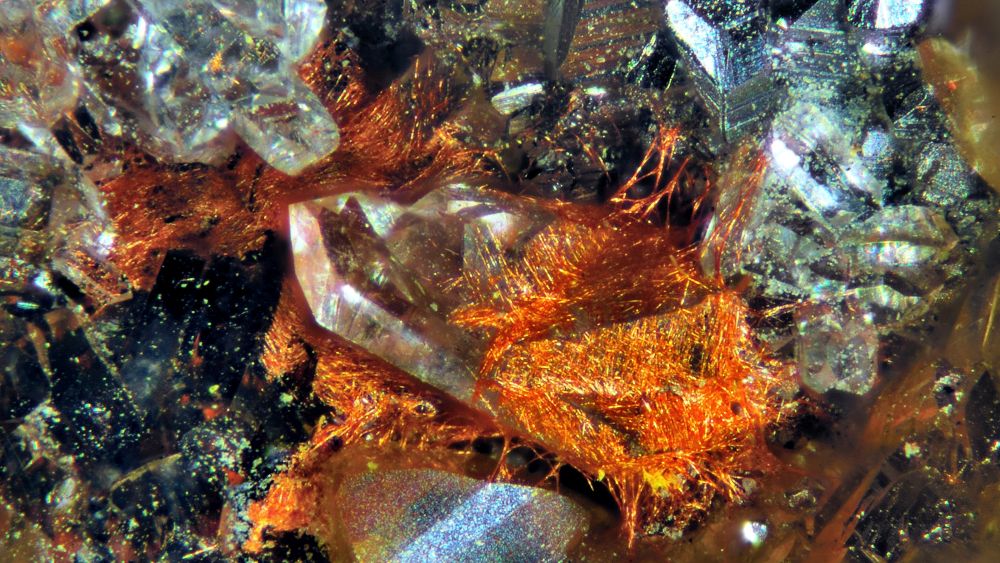Daliranite: Rare Mineral Named After KIT Researcher
Almost a quarter of a century ago, mineralogist Dr. Farahnaz Daliran from the Institute of Applied Geosciences at the Karlsruhe Institute of Technology (KIT) discovered a previously unknown orange-colored mineral during a project on gold mineralization in northwestern Iran. After thorough analysis, it was identified as a new sulfur compound. The International Mineralogical Association confirmed the discovery and named the mineral Daliranite in honor of the researcher.
Sulfosalts With Semiconducting Properties
The rare sulfosalt with the chemical formula PbHgAs₂O₅ forms at temperatures below 150 degrees Celsius. It appears as an extremely thin, approximately two-micrometer-wide, red-orange, flexible fiber and is found in association with other low-temperature minerals such as arsenic sulfides and on quartz crystals.
Its striking color makes daliranite a real eye-catcher – possible applications have not yet been explored. “As a sulfosalt, daliranite exhibits semiconducting properties that could be theoretically interesting, for example for solar cells,” says Daliran. “However, due to its low stability, soft consistency, and toxic components, technical applications are rather unlikely.”
The rare piece is now on public display for the first time as part of the special exhibition “Brought to Light” at the State Museum of Natural History Karlsruhe.
mhe, November 19, 2025

